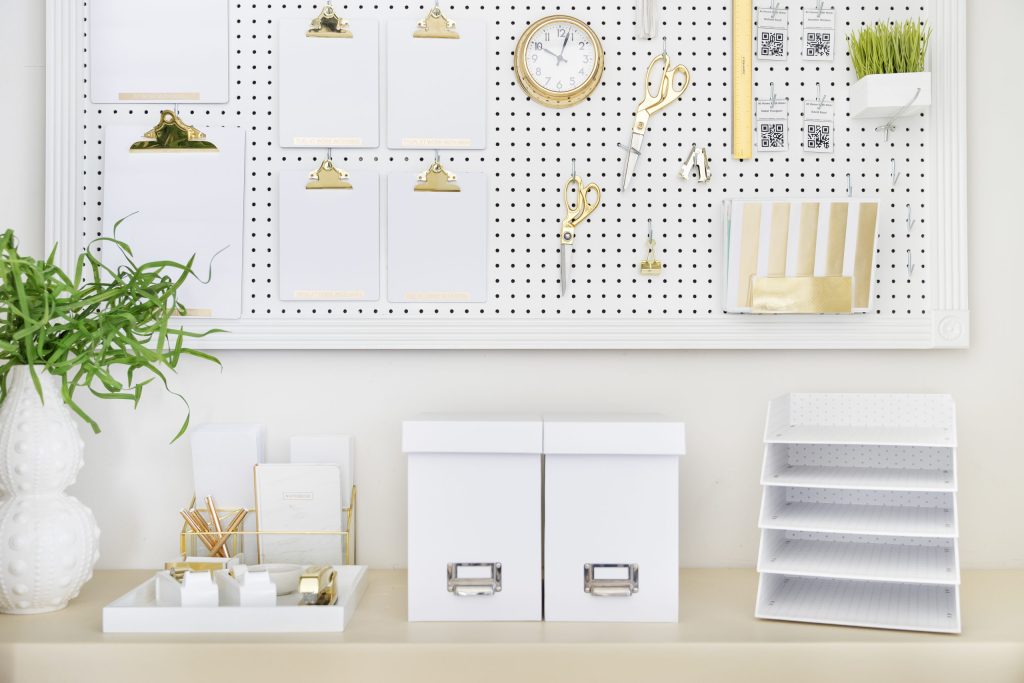Home Organization Tips That Improve Efficiency
Jessica White August 20, 2025
In 2025, home organization is no longer just about tidiness—it’s about creating spaces that support efficiency, productivity, and well-being. Modern homes face challenges such as smaller urban spaces, the need for smart storage, and the integration of technology. With evolving lifestyles and a growing focus on sustainability, homeowners are seeking new ways to declutter, optimize, and streamline daily routines. This guide explores the most effective home organization tips that improve efficiency while keeping your space practical, functional, and stylish.

1. Sustainable and Personalized Organization
Sustainability has become a core principle in home design. Homeowners are increasingly looking for eco-friendly ways to organize their homes while reflecting their personal style. Combining sustainability with personalized touches ensures your home is not only efficient but also meaningful.
Embracing Vintage Maximalism
Vintage maximalism combines functionality with visual richness. Instead of plain, mass-produced organizers, consider using secondhand or antique pieces that tell a story.
Practical Strategies:
- Thrift Shopping: Explore local thrift stores, flea markets, or online marketplaces like Etsy for unique storage solutions.
- Upcycling: Repurpose old furniture into functional storage. For example, convert a vintage dresser into a bathroom linen organizer.
- Mixing Patterns and Textures: Use decorative baskets, fabric bins, and patterned boxes to add character while keeping items contained.
Eco-Friendly Materials
Products made from sustainable or recycled materials are gaining popularity. Bamboo, rattan, and recycled plastics provide durability and a natural aesthetic.
Tips for Sustainability:
- Choose organizers and storage bins made of bamboo or reclaimed wood.
- Reduce overall possessions using a “less but better” mindset.
- Donate items that are no longer needed to extend their life and reduce waste.
Why it Matters: Sustainable organization not only helps the planet but also promotes mindfulness—keeping fewer, meaningful items makes maintenance easier and less stressful.
2. Smart Storage Solutions
Maximizing space while maintaining accessibility is essential in efficient home organization. The trend in 2025 emphasizes smart, functional storage that integrates seamlessly with daily life.
Modular and Multi-Functional Furniture
Furniture is no longer static. Pieces that offer multiple uses can save space and reduce clutter.
Examples:
- Storage Beds: Beds with drawers underneath for clothes or linens.
- Convertible Sofas: Sofas that open into beds or include hidden storage compartments.
- Stackable Cubes and Bins: Adjustable modular cubes allow for flexibility and reconfiguration based on changing storage needs.
Built-In Storage
Custom-built storage solutions are gaining popularity, especially for kitchens, bathrooms, and closets. Built-in shelving, pull-out drawers, and wall-mounted organizers maximize every inch of space.
Tips:
- Pull-out pantry shelves make cooking and meal prep more efficient.
- Install built-in benches with storage under the seating area for extra blankets, shoes, or kids’ toys.
- Hidden drawers in staircases or behind panels can store seasonal items without cluttering your living space.
Pro Advice: For small apartments, focus on vertical space. Wall-mounted shelving, hooks, and hanging racks can transform unused wall areas into functional storage zones.
3. Digital Tools for Home Organization
Technology is revolutionizing how we organize our homes. From digital calendars to smart closets, these tools help homeowners maintain efficiency with minimal effort.
Smart Calendars and Task Management Apps
Digital planners and task apps are increasingly essential in modern households.
Examples:
- Shared Calendars: Google Calendar or Skylight Calendar for families, syncing events and reminders in one place.
- Task Management: Apps like Todoist or Trello can organize chores, shopping lists, and cleaning schedules.
- Routine Alerts: Schedule reminders for recurring tasks like laundry, bills, or pantry restocking.
Benefit: Digital tools reduce mental load and make it easier to manage both household and personal responsibilities.
Inventory Management Apps
Keeping track of household items digitally ensures nothing is lost or forgotten.
Practical Tips:
- Categorize items (kitchenware, electronics, seasonal decorations) and note their locations.
- Use barcode scanning apps for groceries, cleaning products, or office supplies.
- Review and update your inventory quarterly to reflect changes and avoid duplicates.
Extra Tip: For larger households, create a shared digital inventory accessible to all family members for smooth collaboration.
4. Decluttering Strategies for Every Room
Decluttering is a cornerstone of efficient home organization. It reduces stress, improves mental clarity, and simplifies cleaning routines.
The 90/90 Rule
This simple method helps decide whether an item is worth keeping: “Have I used it in the last 90 days, or will I use it in the next 90 days?” If not, donate, sell, or recycle it.
Room-Specific Tips:
- Kitchen: Remove duplicate utensils or rarely used appliances.
- Closet: Keep clothing that fits your style and lifestyle; donate what hasn’t been worn.
- Home Office: Recycle old papers and remove broken electronics.
Room-by-Room Approach
Avoid tackling the entire home at once. Focus on one room, or even one section, at a time.
Tips:
- Start with high-impact areas (kitchen, entryway, or living room).
- Use labeled bins for sorting: keep, donate, recycle, or sell.
- Celebrate small wins to stay motivated.
Digital Decluttering
Digital clutter can cause inefficiency, just like physical clutter.
Steps to Declutter Digitally:
- Organize computer files and folders logically.
- Delete duplicates and redundant apps.
- Use cloud storage to reduce local storage needs and keep data secure.
5. Personalized Zones for Everyday Efficiency
Creating designated zones in the home ensures essential items are easily accessible and prevents clutter from spreading.
Examples:
- Charging Stations: Centralized area for phones, tablets, and laptops.
- Homework Zones: Dedicated spaces for children with stationary, planners, and resources.
- Fitness Corners: A small corner for yoga mats, weights, or exercise bands encourages consistent workouts.
- Entryway Organization: Hooks, cubbies, and baskets for shoes, keys, and bags to avoid clutter entering living areas.
Tip: Personalization ensures zones meet your specific lifestyle needs, making organization functional rather than just aesthetic.
6. Professional Organizing Services
When organizing becomes overwhelming, professional organizers provide guidance and tailored strategies.
Benefits:
- Expert Assessment: Professionals evaluate your space and provide custom solutions.
- Time Savings: They streamline processes for decluttering, categorizing, and storage.
- Emotional Support: Letting go of sentimental items can be challenging; professionals provide structured support.
Pro Tip: Even a one-time consultation can provide actionable systems you can maintain independently.
7. Maximizing Small Spaces
Urban living often comes with limited square footage. Creative organization solutions are essential to make small homes feel spacious and functional.
Space-Saving Furniture
- Foldable desks or wall-mounted drop-down tables.
- Collapsible chairs or nesting tables.
- Lofted beds to free floor space.
Storage Hacks
- Under-bed storage bins for shoes, linens, or seasonal clothing.
- Vertical wall storage, hooks, and hanging racks.
- Multi-purpose furniture like storage benches and ottomans.
Extra Tip: Mirrors and light colors can visually expand small spaces, making organization feel more open and accessible.
8. Trends in 2025 for a Future-Ready Home
Several emerging trends are shaping home organization in 2025:
- Wellness-Oriented Spaces: Design areas to support mental and physical health.
- Minimalist yet Functional Design: Fewer items, but each has a clear purpose.
- Tech Integration: Voice-activated assistants, smart closets, and automated inventory systems.
- Eco-Conscious Choices: Sustainable materials, energy-efficient storage solutions, and repurposing old items.
These trends reflect a shift toward functional, personalized, and environmentally conscious homes.
Conclusion
Efficient home organization in 2025 goes beyond tidying—it’s about integrating sustainable practices, smart technology, and personalized solutions to create living spaces that enhance productivity and well-being. Whether it’s using smart storage systems, digital tools, or professional guidance, homeowners now have more options than ever to maintain order in a practical and stylish way. By implementing these strategies, anyone can transform their home into an organized, efficient, and enjoyable environment.
References
- Elle Decor. (2025, August 21). Pinterest Just Released Its 2025 Fall Trends Report—Here’s What’s In (and What’s Out). Available at: https://www.elledecor.com (Accessed: 20 August 2025).
- Real Simple. (2025, August 15). Home Organization Doesn’t Have to Be Expensive—These 10 Products Are All Under $35 at Amazon. Available at: https://www.realsimple.com (Accessed: 20 August 2025).
- Livingetc. (2025, March 15). 7 Home Organization Trends for 2025 to Keep Home’s Uncluttered. Available at: https://www.livingetc.com (Accessed: 20 August 2025).







